1. Introduction: The Rise of Hidden TV Solutions
 In an era where spatial elegance and technological sophistication converge, the demand for discreet luxury has redefined how we interact with our living spaces. Enter the TV lift—a marvel of modern engineering that transcends mere functionality to become a statement of refined design. No longer confined to bulky entertainment centers or obstructive wall mounts, televisions now glide effortlessly into view and vanish like apparitions, thanks to motorized lift systems. These solutions cater not only to minimalist enthusiasts but also to high-end interiors—think Ralph Lauren’s curated showrooms or Henredon’s bespoke furniture lines, where seamless integration of technology is non-negotiable. As homes evolve into multipurpose sanctuaries and commercial spaces prioritize adaptive design, TV lifts emerge as the unsung heroes of spatial alchemy, transforming cluttered rooms into uncluttered canvases.
In an era where spatial elegance and technological sophistication converge, the demand for discreet luxury has redefined how we interact with our living spaces. Enter the TV lift—a marvel of modern engineering that transcends mere functionality to become a statement of refined design. No longer confined to bulky entertainment centers or obstructive wall mounts, televisions now glide effortlessly into view and vanish like apparitions, thanks to motorized lift systems. These solutions cater not only to minimalist enthusiasts but also to high-end interiors—think Ralph Lauren’s curated showrooms or Henredon’s bespoke furniture lines, where seamless integration of technology is non-negotiable. As homes evolve into multipurpose sanctuaries and commercial spaces prioritize adaptive design, TV lifts emerge as the unsung heroes of spatial alchemy, transforming cluttered rooms into uncluttered canvases.
2. What Is a TV Lift?
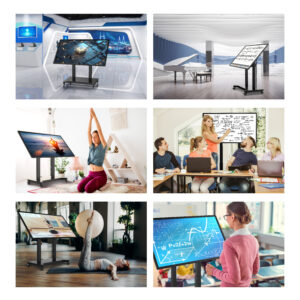 At its core, a TV lift is a symphony of precision mechanics and intelligent design—a motorized apparatus that orchestrates the vertical dance of a television between concealment and revelation. Imagine a sleek cabinet crafted from hand-selected cherry or mahogany, its polished surface betraying no hint of the technological wizardry within. With a tap on a smartphone app or a voice command, the system awakens: the TV ascends silently from its hidden compartment, poised for entertainment, then retreats just as gracefully when the credits roll. These mechanisms are not one-size-fits-all; they adapt to diverse environments. Ceiling-mounted lifts defy gravity in bedrooms or conference rooms, while furniture-integrated models—like those favored by luxury brands such as Drexel Heritage—blend into custom cabinetry or even beds, ensuring that technology never disrupts aesthetics. The result? A harmonious marriage of utility and artistry, where the TV is both centerpiece and chameleon.
At its core, a TV lift is a symphony of precision mechanics and intelligent design—a motorized apparatus that orchestrates the vertical dance of a television between concealment and revelation. Imagine a sleek cabinet crafted from hand-selected cherry or mahogany, its polished surface betraying no hint of the technological wizardry within. With a tap on a smartphone app or a voice command, the system awakens: the TV ascends silently from its hidden compartment, poised for entertainment, then retreats just as gracefully when the credits roll. These mechanisms are not one-size-fits-all; they adapt to diverse environments. Ceiling-mounted lifts defy gravity in bedrooms or conference rooms, while furniture-integrated models—like those favored by luxury brands such as Drexel Heritage—blend into custom cabinetry or even beds, ensuring that technology never disrupts aesthetics. The result? A harmonious marriage of utility and artistry, where the TV is both centerpiece and chameleon.
3. Core Components of a TV Lift Mechanism
The magic of a TV lift lies in its meticulously engineered anatomy, a fusion of robust hardware and intuitive software. Let’s dissect its beating heart:
- Motor and Drive System:
The lifeline of the system, a synchronous motor with electromagnetic brakes, ensures buttery-smooth motion. Paired with aerospace-grade screw bars and reinforced rails, it converts rotational force into flawless vertical travel—no jerks, no noise. This isn’t mere machinery; it’s choreography. -
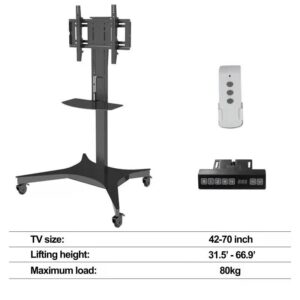
The CTD-TV2-F1 is a sturdy, height-adjustable TV stand with a maximum load of 80kg, featuring a 360-degree wheel system for easy movement and a remote control for convenient operation. Control Systems:
Gone are the days of cluttered remotes. Modern lifts embrace smart integration: a dedicated iOS app (exclusive to TVLiftCabinet.com’s Linear Actuator line) replaces traditional controls, offering one-touch operation. For the tech-savvy, compatibility with voice assistants like Alexa or Siri looms on the horizon, though current models prioritize streamlined, app-driven precision. - Structural Elements:
Durability meets craftsmanship. The TV mounting plate, engineered for ultra-thin OLEDs and hefty commercial displays alike, anchors the system. Rails, forged from hardened steel, guarantee stability even during rapid ascents. And let’s not forget the cabinetry—handcrafted from oak, pine, or mahogany, each piece undergoes rigorous inspection by a team of 20+ quality assurance experts Safety? Built-in resistance braking halts free-fall scenarios, while anti-vibration tech ensures the screen remains steady, even in motion.
4. How a TV Lift Works: Step-by-Step
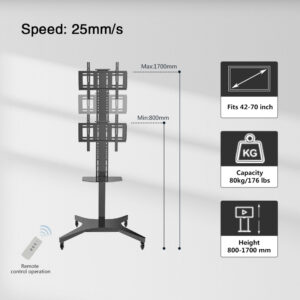
The orchestration of a TV lift’s movement is a ballet of precision engineering, blending mechanical rigor with digital intelligence. Here’s how this symphony unfolds:
- Activation: The Silent Awakening
A tap on a smartphone app, a voice command to Alexa, or a discreet wall-mounted button sends a signal through the system’s neural network. Unlike traditional remotes, modern lifts prioritize zero-tactile clutter, relying on encrypted wireless protocols to initiate motion. - Motorized Movement: The Heartbeat of Precision
The synchronous motor, fortified with electromagnetic brakes, awakens. Its rotor spins with the quiet determination of a Swiss timepiece, driving aerospace-grade screw bars that convert rotational energy into vertical thrust. For larger systems, dual motors synchronize via algorithmic calibration, ensuring the 85-inch OLED ascends without even a micron of tilt. - Positioning: Where Physics Meets Art
As the TV nears its apex, resistance braking engages—a safety net borrowed from industrial pressure control valves. Anti-vibration dampeners, akin to those in luxury car suspensions, absorb residual kinetic energy, freezing the screen at the exact eye-level height programmed into the system. - Retraction: Vanishing Act
Post-viewing, a gentle hum signals retreat. The TV descends along hardened steel rails, guided by load sensors that adjust speed based on weight distribution. Cabinet doors, engineered with soft-close hinges, seal shut with a whisper, leaving no trace of the technological marvel within.
5. Types of TV Lifts
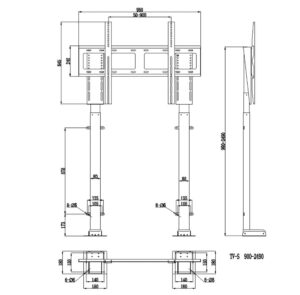 TV lifts are not monolithic; they adapt to architectural constraints and aesthetic visions like chameleons. Here’s a taxonomy of innovation:
TV lifts are not monolithic; they adapt to architectural constraints and aesthetic visions like chameleons. Here’s a taxonomy of innovation:
- Ceiling-Mounted Lifts: Gravity-Defying Elegance
Ideal for spaces where walls are sacred (think art galleries or minimalist lofts), these systems suspend TVs from reinforced ceiling joists. Using a hybrid of linear actuators and counterbalance weights, they flip downward at a 15° angle—a nod to ergonomic viewing—before retracting flush with the ceiling. - Furniture-Integrated Lifts: Design as Camouflage
Imagine a bespoke walnut credenza by Baker Furniture, its polished surface unbroken until the TV emerges. These lifts embed within cabinetry or beds, leveraging hydraulic actuatorsfor silent operation. Luxury brands like Roche Bobois even integrate humidity sensors to protect wood veneers during seasonal shifts. - Commercial-Grade Systems: Power Meets Precision
Designed for boardrooms or medical suites, these lifts handle 200+ lbs displays with industrial servo motors. They incorporate fail-safe protocols inspired by pressure control valves (PVs), ensuring zero downtime—critical in settings where a frozen screen could derail a multimillion-dollar pitch or surgical procedure.
6. Key Benefits of TV Lifts
Beyond mere novelty, TV lifts solve spatial and sensory challenges with surgical precision:
- Spatial Alchemy
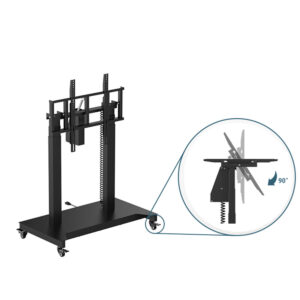
Electric TV Lift, height adjustable, high strength steel, stable, universal wheel, convertible bracket, rust-resistant, quality certifications, factory direct, 2-year warranty. By eliminating the “black rectangle” dominance of traditional TVs, lifts reclaim 30%+ of visual real estate in compact rooms. A 65-inch display vanishing into a ceiling cavity transforms a studio apartment from cluttered to cathedral-like.
- Aesthetic Sovereignty
These systems honor design integrity. For instance, a B&B Italia sofa with an integrated lift ensures the TV never clashes with the room’s curated palette of brushed brass and bouclé wool. - Safety Reimagined
Borrowing from industrial valve safety systems, lifts feature triple-layer safeguards:- Electromagnetic brakes lock during power outages.
- Load sensors halt movement if obstructions are detected.
- Thermal cutoffs prevent motor overheating, even during 12-hour Netflix marathons.
- Technological Synergy
Advanced models sync with smart home ecosystems. Imagine a Lutron lighting system that dims ambient lights as the TV ascends—a feature achieved through CAN bus communication protocols, originally developed for precision fluid control in pipelines. - Future-Proof Flexibility
Modular rails accommodate TVs from 32″ to 85″, while firmware updates (delivered via encrypted IoT networks) ensure compatibility with next-gen 16K displays.
7. Installation and Maintenance Tips
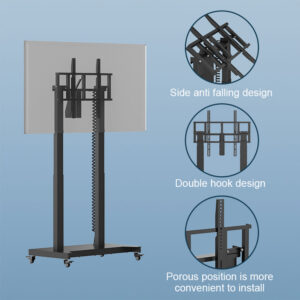
Installing a TV lift is akin to conducting a symphony—every component must harmonize perfectly. While DIY enthusiasts might be tempted to tackle the project, professional installation is non-negotiable for ensuring alignment, load distribution, and long-term reliability. Here’s why expertise matters:
- Structural Assessment:
A professional will evaluate wall studs, ceiling joists, or cabinetry integrity using tools like stud finders (as emphasized in common installation guides). For ceiling-mounted systems, reinforced steel beams may be required to handle dynamic loads during ascent. - Load Balancing:
Larger TVs (e.g., 85-inch OLEDs) demand dual-motor synchronization to prevent tilt. Specialists use laser levels and torque sensors to calibrate screw bars, ensuring the TV rises as smoothly as a theater curtain. - Cable Management:
Borrowing techniques from luxury home theater setups, installers route power and HDMI cables through concealed conduits or within custom cabinetry, eliminating visual clutter.
Maintenance Essentials:
- Lubrication:
Apply aerospace-grade silicone lubricant to screw bars every 6 months to reduce friction and noise. - Motor Health Checks:
Use diagnostic apps (included with premium models) to monitor motor temperature and brake performance. - Seasonal Adjustments:
Wooden cabinetry may expand or contract with humidity changes. Professionals recommend annual inspections to ensure seamless door closure.
8. FAQs About TV Lifts
Q1: “Can a TV lift handle ultra-thin OLED screens without warping?”
Yes—modern lifts feature adaptive mounting plates with pressure-distributing foam pads, designed specifically for delicate OLED panels. The system’s anti-vibration tech further safeguards against micro-flexes during movement.
Q2: “How does the electromagnetic brake enhance safety during power outages?”
Inspired by industrial valve safety systems, the brake engages instantly if power is lost, locking the TV in place mid-motion. This prevents uncontrolled drops, even in regions prone to electrical instability.
Q3: “Are TV lifts compatible with voice assistants like Alexa?”
While most systems currently rely on proprietary apps, next-gen models integrate with smart home ecosystems via Zigbee or Matter protocols. Imagine commanding, “Alexa, lower the TV for movie night,” and watching the room transform.
Q4: “What’s the ideal height for a ceiling-mounted TV lift?”
Ergonomics dictate that the screen’s center should align with seated eye level (around 42 inches from the floor). However, motorized tilting mechanisms (up to 15°) allow adjustments for reclined viewing in bedrooms or home theaters.
9. Conclusion: The Future of TV Integration
In the relentless pursuit of spatial elegance, TV lifts have transcended their utilitarian roots to become architectural statements. They embody a future where technology dissolves into design—where screens emerge only when needed, leaving walls and ceilings unbroken canvases for art, light, and imagination.
From minimalist lofts in Montréal to high-rise penthouses in Dubai, these systems are redefining what it means to live with technology. They answer the modern homeowner’s plea: “Let my space breathe, but let it dazzle on command.”
As smart homes evolve, expect TV lifts to integrate deeper with environmental controls—imagine a system that lowers your TV as the sun sets, synchronized with motorized shades and ambient lighting. The next chapter of interior design isn’t just about hiding technology; it’s about choreographing it.


